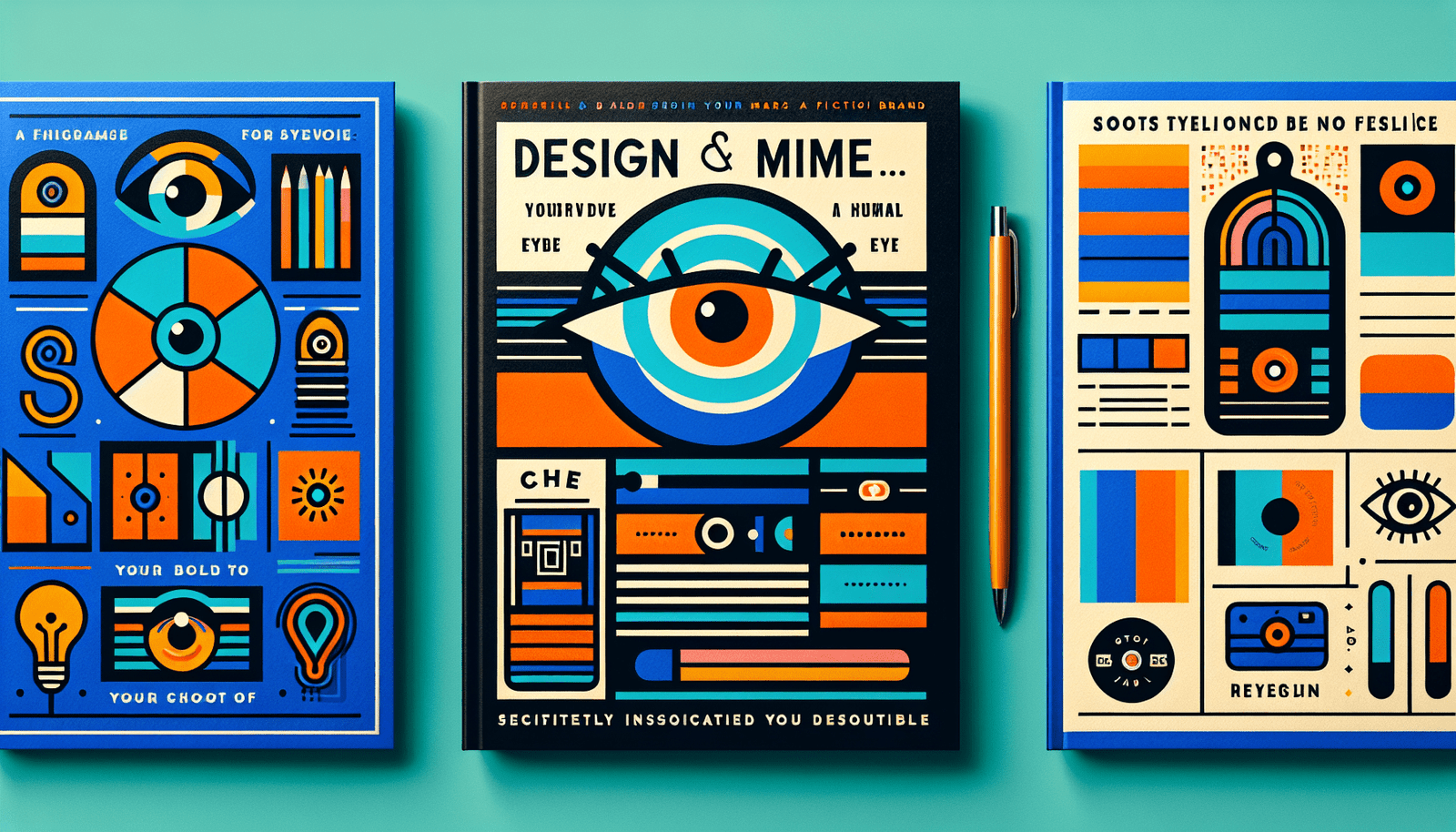If you’re looking to strengthen your brand’s recognition, crafting eye-catching covers could be your golden ticket. By utilizing compelling visuals and engaging designs, you can create a memorable presence that resonates with your audience. In this article, we’ll explore actionable strategies and creative tips to help you design covers that not only catch the eye but also effectively communicate your brand’s identity and values. Get ready to elevate your branding game and ensure your message stands out in a crowded marketplace!
Ever wondered how some brands become instantly recognizable just from a glance at their covers? Building brand recognition through eye-catching covers is a potent strategy that many successful companies have mastered. But how do you do it effectively?
Let’s delve into practical and actionable tips that can help you elevate your brand by creating eye-catching covers.
Why Brand Recognition Matters
Brand recognition is crucial for several reasons. It helps you stand out in a crowded market, fosters customer loyalty, and increases the perceived value of your products or services. But at the heart of brand recognition is a single, powerful concept: familiarity. The more familiar your brand looks to potential customers, the more likely they are to trust and choose your products over others.
The Science Behind Visual Recognition
Visual elements such as colors, fonts, and images affect how people perceive a brand. Our brains are wired to remember visual cues more easily than text. This phenomenon is known as the Picture Superiority Effect. When crafting covers, using visually appealing and consistent branding elements can significantly improve recall and recognition.
Consistency is Key
Consistency plays a critical role in building brand recognition. By maintaining a consistent visual style across all platforms and materials, you can help customers quickly identify and differentiate your brand.
Elements of an Eye-Catching Cover
Creating an eye-catching cover requires attention to various elements. These components work together to create a cohesive and appealing design.
Color Scheme
Color is one of the first things that grab attention. The right combination of colors can evoke specific emotions and make your brand more memorable.
Common Color Associations
| Color | Emotional Response |
|---|---|
| Red | Excitement, Passion, Urgency |
| Blue | Trust, Calm, Professionalism |
| Yellow | Happiness, Optimism, Attention-Grabbing |
| Green | Health, Tranquility, Growth |
| Black | Sophistication, Power, Elegance |
| White | Cleanliness, Simplicity, Purity |
Choose colors that align with your brand’s values and message. Make sure these colors are used consistently across all your materials.
Fonts and Typography
Your choice of fonts can say a lot about your brand. While script fonts may suggest elegance and luxury, sans-serif fonts often look modern and clean. Aim for readability and a font style that reflects your brand identity.
Imagery
The images you choose should be high-quality and relevant to your brand. Make sure they align with your overall aesthetic and message. Avoid clichéd stock photos; opt for authentic, original imagery whenever possible.
Logos and Icons
Your logo is the face of your brand. It should be prominently displayed but not overwhelming. Icons can also be used to guide the viewer’s eye and emphasize key points.
Layout and Composition
How you arrange elements on your cover can affect how they are perceived. Use the rule of thirds, focal points, and white space to create a balanced and visually appealing layout.
Steps to Creating an Eye-Catching Cover
Creating a compelling cover involves several steps. Here’s a step-by-step guide to help you through the process.
Step 1: Understand Your Audience
Before you start designing, it’s crucial to understand who your audience is. What attracts them? What are their preferences and behaviors? Conduct surveys, focus groups, or use analytics tools to gather this information.
Step 2: Define Your Brand’s Core Message
What do you want your audience to feel when they see your cover? Your core message should be reflected in every design choice you make. Whether it’s luxury, reliability, or innovation, your cover should communicate this message clearly.
Step 3: Sketch and Plan
Before jumping into design software, sketch out your ideas on paper. Play around with different layouts, color schemes, and elements. Planning helps you visualize the final product and make necessary adjustments early in the process.
Step 4: Use Design Tools
Leverage modern design tools like Adobe Creative Suite, Canva, or Sketch to bring your vision to life. These tools offer a range of features from basic designs to intricate details, making it easier to craft a cover that stands out.
Step 5: Get Feedback
Before finalizing your cover, get feedback from colleagues, friends, or focus groups. Sometimes, an external perspective can catch details you might have missed.
Step 6: Review and Refine
Once you have feedback, make the necessary adjustments. Refine your design to ensure that every element complements each other harmoniously.
Tips for Ongoing Improvement
Brand recognition is not a one-time task but an ongoing effort. Here are some tips to keep your brand’s appearance fresh and appealing.
A/B Testing
Conduct A/B testing with different cover designs to see which one resonates best with your audience. Use analytics to track performance and make data-driven decisions.
Keep Up With Trends
Stay updated with design trends and incorporate relevant elements into your covers. Be careful not to follow trends blindly; ensure they align with your brand.
Measure Success
Track various metrics such as engagement rates, conversion rates, and customer feedback to gauge the effectiveness of your covers. Use this data to make improvements continuously.
Case Studies: Brands That Nailed It
Sometimes, the best way to learn is by looking at those who have already succeeded. Here are some brands that excel in creating eye-catching covers:
Apple
Apple’s minimalist design approach is iconic. By using sleek designs, simple colors, and high-quality images, Apple successfully communicates its brand message of innovation and luxury.
Coca-Cola
With its timeless color scheme and classic typography, Coca-Cola is instantly recognizable. The consistent use of the red and white color palette reinforces its brand identity.
Nike
Nike uses bold, dynamic imagery to convey movement and athleticism. The iconic swoosh logo combined with motivational taglines like “Just Do It” makes their covers compelling and inspiring.
Common Mistakes to Avoid
Creating eye-catching covers is a skill, and there are common pitfalls you should avoid.
Overcrowding
Less is often more. Overloading your cover with too many elements can make it confusing and unattractive. Focus on the essentials.
Inconsistent Branding
Inconsistency can confuse your audience and dilute your brand message. Make sure all your design elements, from colors to fonts, are consistent across all platforms.
Ignoring Your Audience
Designing without considering your audience’s preferences can lead to a disconnect. Always design with your audience in mind.
Tools and Resources for Better Design
There are numerous tools and resources available to help you create stunning covers.
Design Software
Some popular design tools include:
- Adobe Creative Suite: Versatile but has a steep learning curve.
- Canva: User-friendly and ideal for beginners.
- Sketch: Great for digital design and UI elements.
Stock Photos and Icons
Websites like Unsplash, Pexels, and Freepik offer high-quality images and icons that can be used to enhance your covers.
Online Tutorials
Platforms like Skillshare, Coursera, and YouTube offer tutorials that can help you improve your design skills.
Conclusion
Building brand recognition through eye-catching covers is a multifaceted process that involves understanding your audience, consistent branding, and ongoing refinement. By focusing on elements like color schemes, typography, and high-quality imagery, and following a structured approach, you can create covers that not only capture attention but also strengthen your brand’s identity.
So the next time you’re crafting a cover, remember: each element matters, consistency is key, and always design with your audience in mind. Happy designing!



